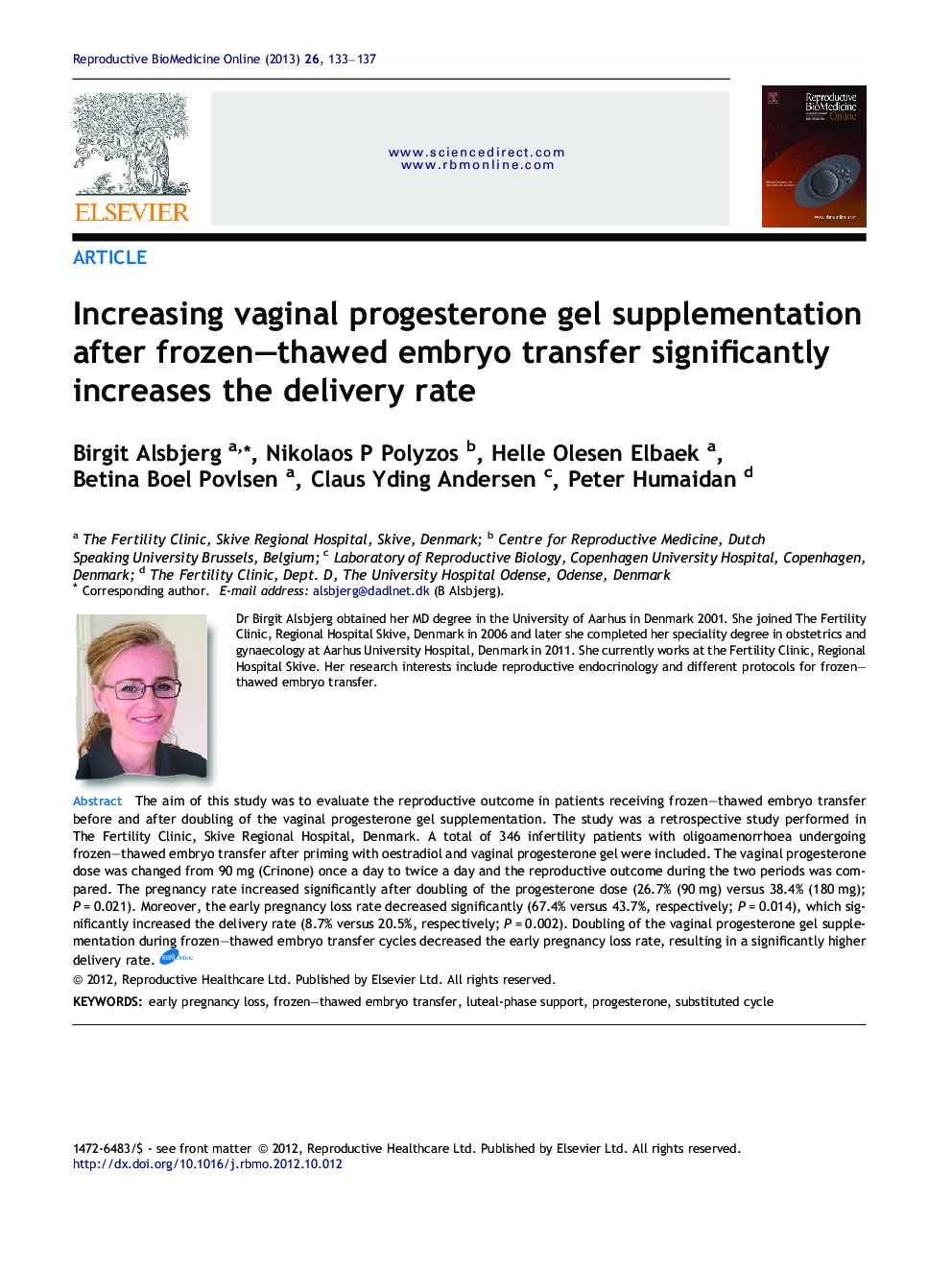| Article ID | Journal | Published Year | Pages | File Type |
|---|---|---|---|---|
| 3970349 | Reproductive BioMedicine Online | 2013 | 5 Pages |
The aim of this study was to evaluate the reproductive outcome in patients receiving frozen–thawed embryo transfer before and after doubling of the vaginal progesterone gel supplementation. The study was a retrospective study performed in The Fertility Clinic, Skive Regional Hospital, Denmark. A total of 346 infertility patients with oligoamenorrhoea undergoing frozen–thawed embryo transfer after priming with oestradiol and vaginal progesterone gel were included. The vaginal progesterone dose was changed from 90 mg (Crinone) once a day to twice a day and the reproductive outcome during the two periods was compared. The pregnancy rate increased significantly after doubling of the progesterone dose (26.7% (90 mg) versus 38.4% (180 mg); P = 0.021). Moreover, the early pregnancy loss rate decreased significantly (67.4% versus 43.7%, respectively; P = 0.014), which significantly increased the delivery rate (8.7% versus 20.5%, respectively; P = 0.002). Doubling of the vaginal progesterone gel supplementation during frozen–thawed embryo transfer cycles decreased the early pregnancy loss rate, resulting in a significantly higher delivery rate.This study evaluated the reproductive outcome of 346 women with oligoamenorrhoea (cycle length >34 days) or amenorrhoea undergoing oestradiol and progesterone priming prior to frozen–thawed embryo transfer. Patients treated with vaginal progesterone gel (Crinone 90 mg) twice daily had a lower risk of pregnancy loss (43.7%) compared with women treated once a day (67.4%). This resulted in a significantly higher delivery rate (20.5% versus 8.7%, respectively).
